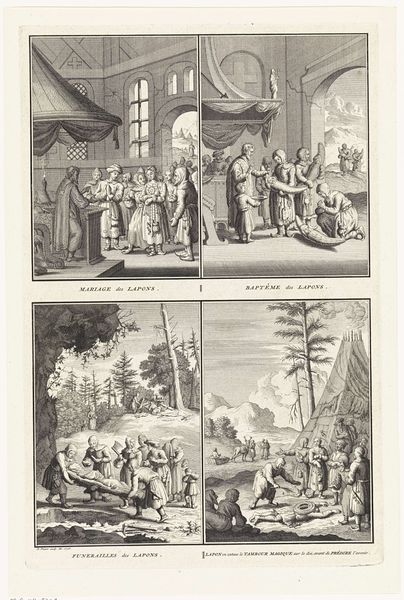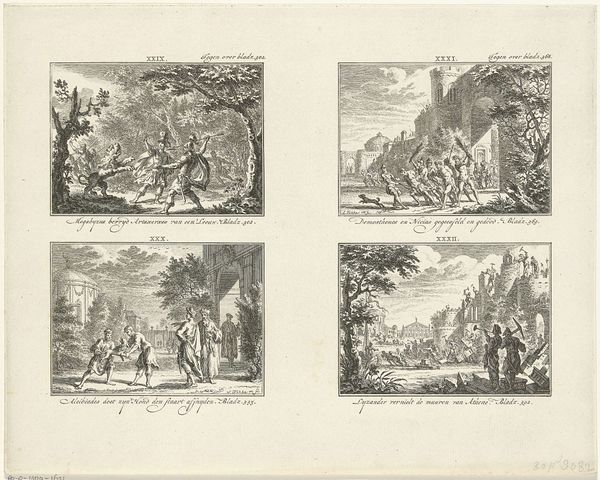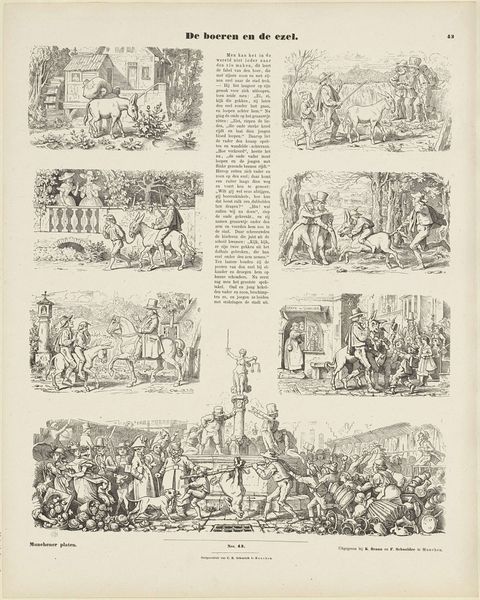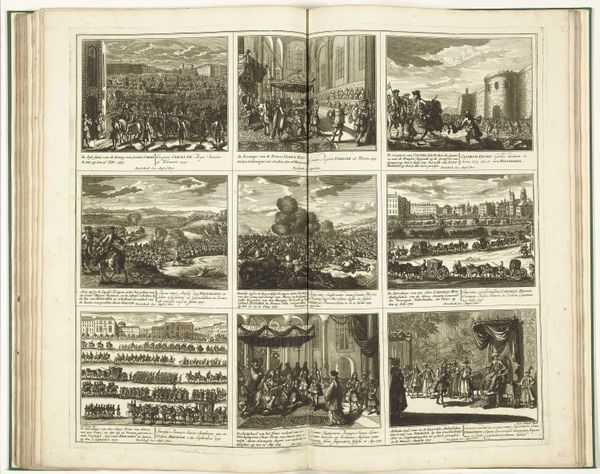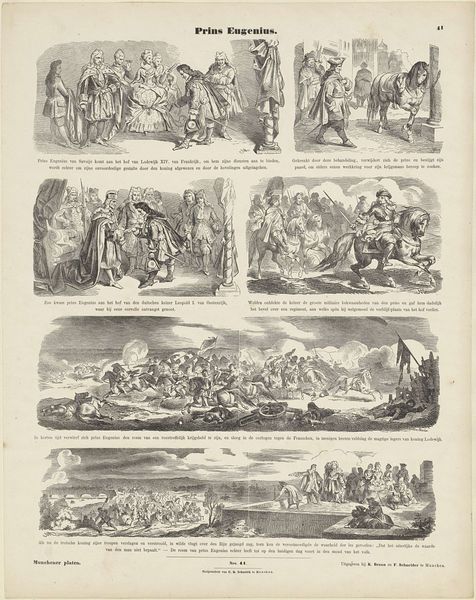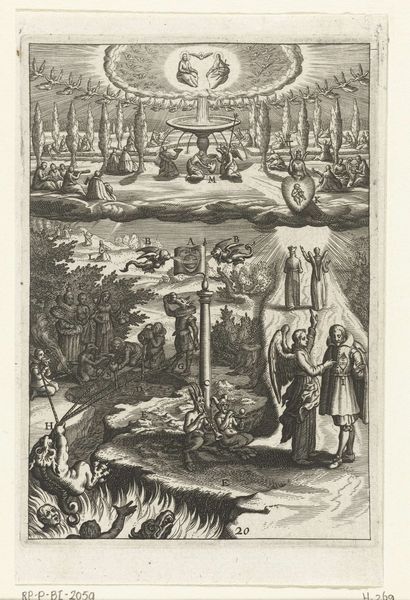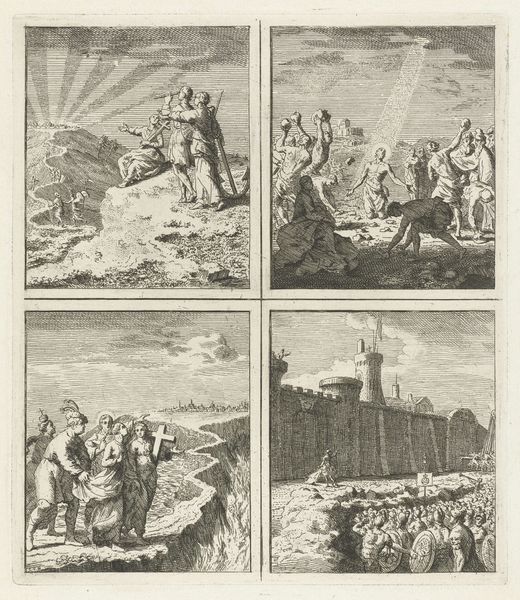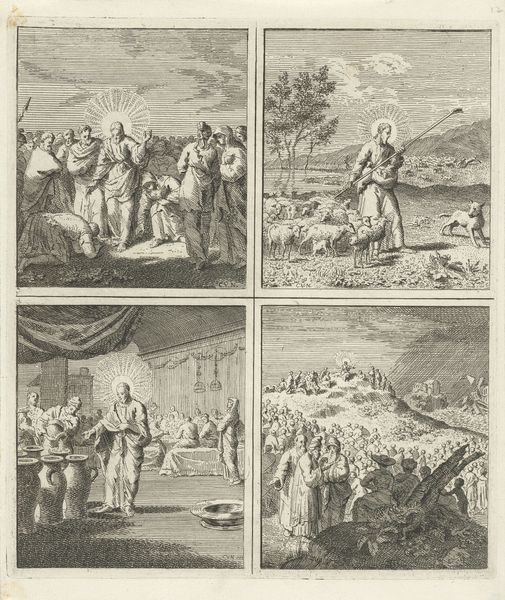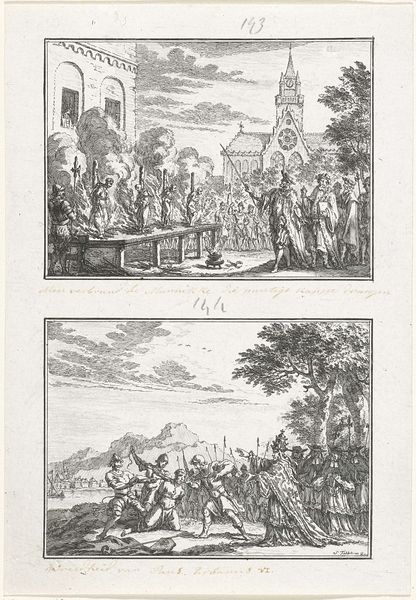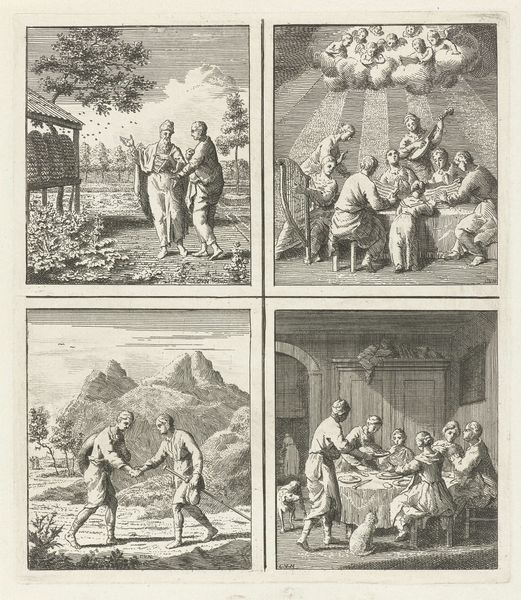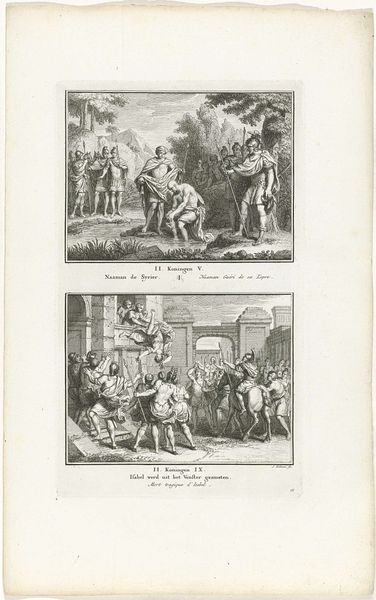
print, engraving
#
narrative-art
# print
#
old engraving style
#
engraving
Dimensions: height 334 mm, width 218 mm
Copyright: Rijks Museum: Open Domain
Curator: What an intriguing composition! We're looking at "Sami goden", a 1726 engraving by Bernard Picart, currently held at the Rijksmuseum. My eye is immediately drawn to the four distinct scenes depicted. Editor: Yes, it's quite striking. It's also… unsettling. The precision of the engraving only amplifies the alienness of these rituals. A stark reminder of cultural difference, rendered in meticulous detail. I am most curious about the materials that constitute this print, since those materials provide such cultural insight. Curator: Indeed. Picart, though never having visited Lapland himself, constructed these images based on existing ethnographic texts and travelogues, which immediately makes me question his methods and biases. Editor: Right, so the cultural consumption habits of 18th century Europe shaped what images, materials, and production processes were put in motion to portray this idea of Lapland, correct? That sounds like Baroque orientalism to me. Curator: Precisely. What are we *really* seeing? Representations *of* Sami belief, or *Picart's* interpretations filtered through a Western lens? The captions "Jumala Divinite des Lapons," "Wirku-Accha Divinite des Lapons," and so forth, attempt to categorize Sami deities. It begs the question, who benefits from categorizing the "other"? Editor: That's key. Who is this intended for, who consumes this work? How were the copper plates created, what labor was involved, and how does its creation affect our reading of the narrative scenes represented within? I bet it has a lot to say about production lines. Curator: Absolutely. Considering it circulated within a specific market—one fascinated by the "exotic"— the social context is essential. Museums collect such works and preserve specific and intentional records of their production. What would change if this image were reframed or even decontextualized? Editor: Ultimately, the engraving process allows us to ponder how material culture operates within complex cultural hierarchies. What gets preserved, who preserves it, and why do they do so using particular raw resources or production strategies? I appreciate that in "Sami goden" Picart inadvertently brings up those questions! Curator: A thought-provoking piece, reminding us to constantly interrogate the historical forces that shaped—and continue to shape—our understanding of different cultures. Editor: Definitely a potent conversation-starter, highlighting the importance of production means when analyzing depictions of different cultural practices!
Comments
No comments
Be the first to comment and join the conversation on the ultimate creative platform.
